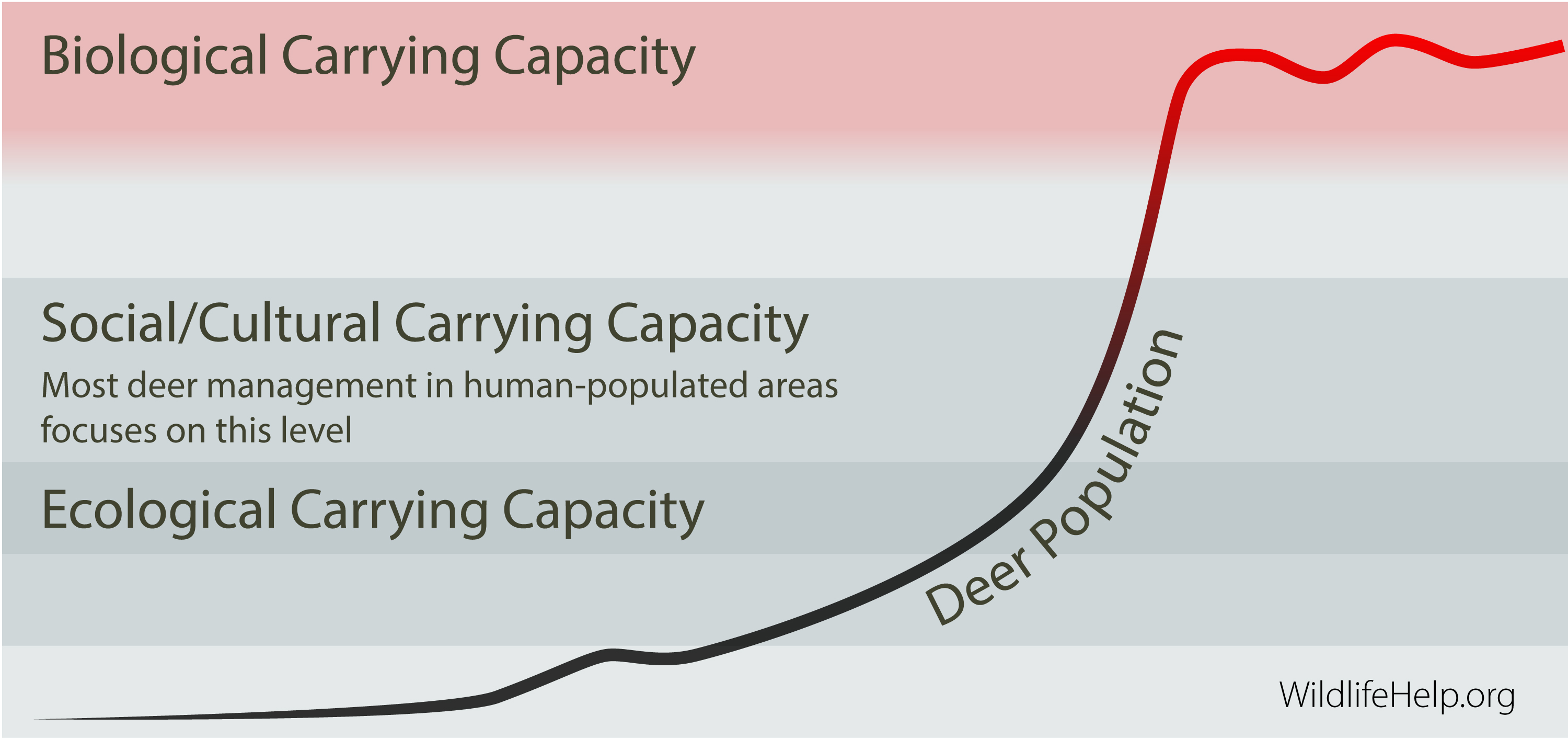
Deer population carrying capacity
When managing deer in human-populated areas, wildlife managers consider the "carrying capacity" of an area in three contexts: biological, ecological, and social/cultural.
Biological carrying capacity is the maximum number of deer that a habitat can support on a continuous, long-term basis. The biological carrying capacity in areas with the availability of artificial food sources (e.g. birdseed, fertilized lawns) may be much higher than in a wild environment.
Ecological carrying capacity is the level at which deer do not negatively influence native plants and animals. Ecological carrying capacity for white-tailed deer is normally in the range of 3 to 10 deer per square kilometer. Beyond these densities, deer browsing impacts the regeneration of certain plants that in turn impacts other wildlife species. Deer numbers at this level can still present challenges like deer-vehicle collisions or damage to yards and gardens.
Social or cultural carrying capacity is the deer population level at which people can tolerate or accept the problems associated with a deer herd. In most cases when managing deer in populated areas, local residents will determine the social carrying capacity for the deer herd. Peoples' tolerances for deer can vary widely, so it is important for communities to work together in managing and controlling deer population.


